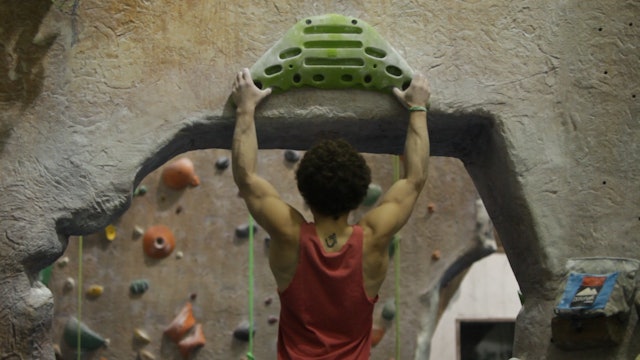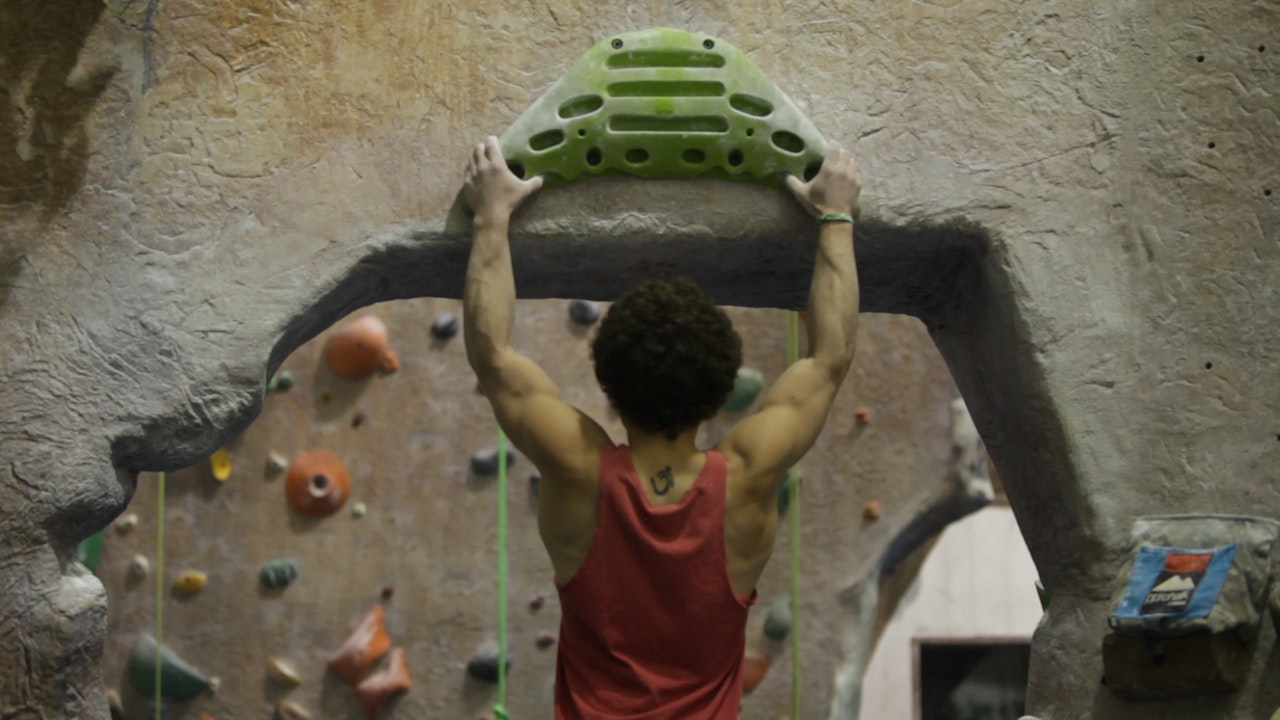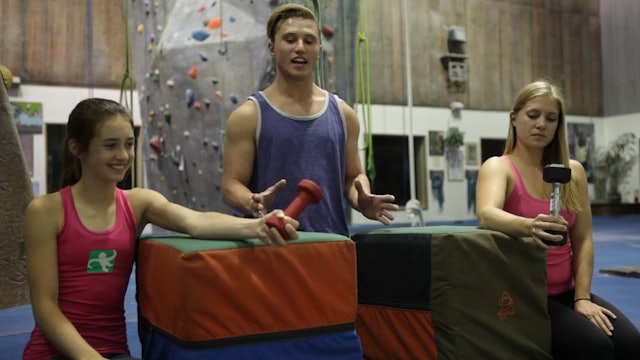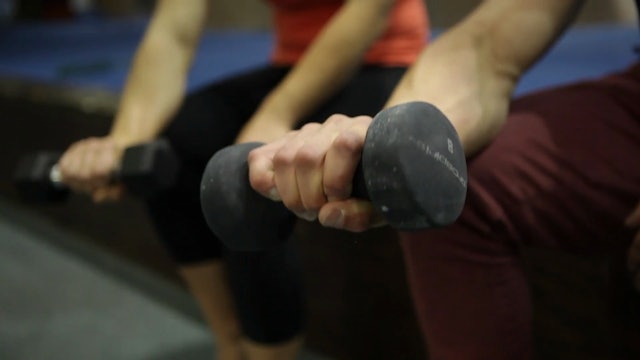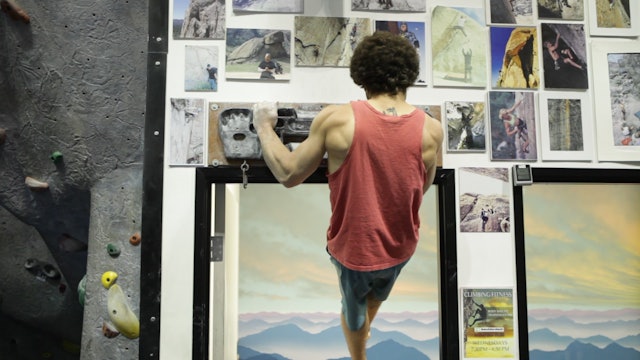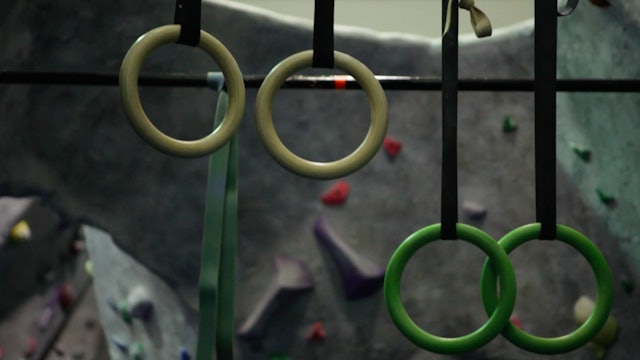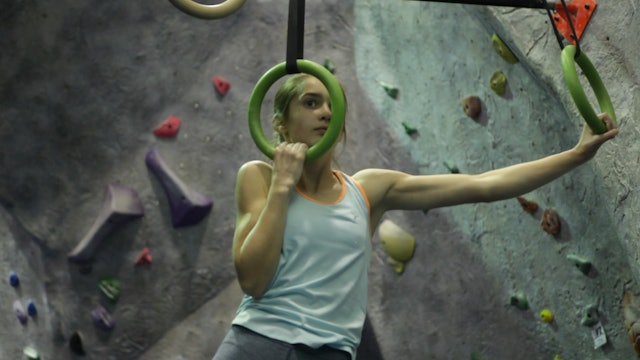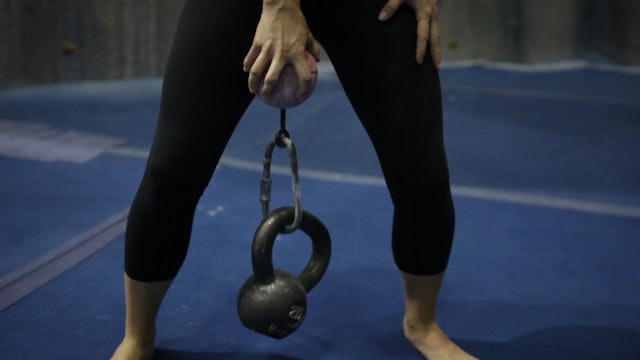Fitness for Climbing
Welcome to CTT's Fitness for Climbing series. Fitness for Climbing augments and balances the physical nature of climbing. These videos are intended to increase climbing strength, improve targeted areas, and prevent overtraining injuries. These exercises are used for both indoor and outdoor climbing fitness.
Similar to our Yoga & Stretching for Climbing series, some of these videos are ideal for days-on in your climbing regimen, while some videos are for days-off.
Check out CTT athlete Amelia Marcuson with the One-Arm Rock Ring Lock-Offs!
Be careful, and have fun.
Know & Go with ClimbingTechTips.com
Please remember that climbing is inherently dangerous. Climb at your own risk.
-
Fitness for Climbing: 1. Myofascial Release - Pectoral Muscles
In this video we review how to use a lacrosse ball for myofascial release. Myofascial release is a term used to describe rolling yourself out. Key muscles are targeted.
Here we review how to roll out your chest muscles using a lacrosse ball. This is an important exercise for climbing because, ...
-
Fitness for Climbing: 2. Myofascial Release - Upper Back
In this video we review how to use a lacrosse ball for myofascial release. Myofascial release is a term used to describe rolling yourself out. Key muscles are targeted.
Here we review how to roll out your upper back muscles using a lacrosse ball. This is an important exercise for climbing beca...
-
Fitness for Climbing: 3. Pronation for Antagonist (extensor) Training
A common climbing injury is called medial epicondylitis. This is also known as golfer's elbow. In this video we review the exercise Pronation for Antagonist (extensor) Training to help minimize that injury.
Golfer’s elbow occurs when there is damage to the medial epicondyle, which is located o...
-
Fitness for Climbing: 4. Wrist Extensions for Antagonist (extensor) Training
In this video we review an exercise known as Wrist Extensions for Antagonist (Extensor) training. This exercise helps prevent tendon injury, the most common of which is called medial epicondylitis. This is otherwise known as golfer's elbow.
Golfer’s elbow occurs when there is damage to the med...
-
Fitness for Climbing: 5. Hangboard - Repeaters
Hangboarding is one of the best ways to build climbing hand strength and muscular endurance. There are many ways to use hangboards for climbing fitness. Here we review the hangboard exercise known as Repeaters.
Start by grabbing the easiest holds on the hangboard with both hands and dead hang ...
-
Fitness for Climbing: 6. Hangboard - Typewriters
Here we continue our review of how to use a hangboard for climbing fitness. The Typewriter exercise helps develop power for your back and shoulders.
Start by grabbing onto the easier holds of the hangboard in a locked-off position, bent at elbows with head at hand-level. Then you begin transfe...
-
Fitness for Climbing: 8. Rock Rings - Lock-Offs
It is time to try hanging rings for climbing fitness! Specifically we’ll review the lock-off exercise, with focus on strengthening the upper body.
1. The start of a lock-off is similar to holding your body position at the top of a pull-up. Start by grabbing onto both rings, and perform a pull...
-
Fitness for Climbing: 9. Rock Rings - One Arm Lock-Offs
In this video we continue our review of how to use hanging rings for climbing fitness. Specifically we’ll review the one arm lock-off exercise, which is a more advanced form of training from the regular lock-offs.
1. Start by grabbing onto both rings, and perform a pull up so that your chin is...
-
Fitness for Climbing: 7. Rock Rings - Shoulder Shrugs
Here we review how to use hanging rings for climbing fitness. The shoulder shrug exercise is designed to counter the overdevelopment of lat muscles, which is common amongst climbers. This exercise also helps correct bad posture, by bringing hunched shoulders back to normal position.
Instructio...
-
Fitness for Climbing: 10. Grip Strength - Kettlebells
Here we review how to use a kettlebell for grip strength training exercises. You will need to attach an atomic ball to a kettlebell. Weight of the kettlebell varies depending on strength.
Instructions:
1. Start by bending your knees so you can reach the atomic ball, while keeping your back ...
-
Fitness for Climbing: 11. Tendon Injury Prevention - Power Fingers
The concept of resistance training, specifically for this exercise, is to use the opposite motion as used when climbing. Here we use Power Fingers or rubber bands to create the opposite motion used when grabbing onto a hold. This opposition resistance training helps prevent tendon injury.
Ins...
